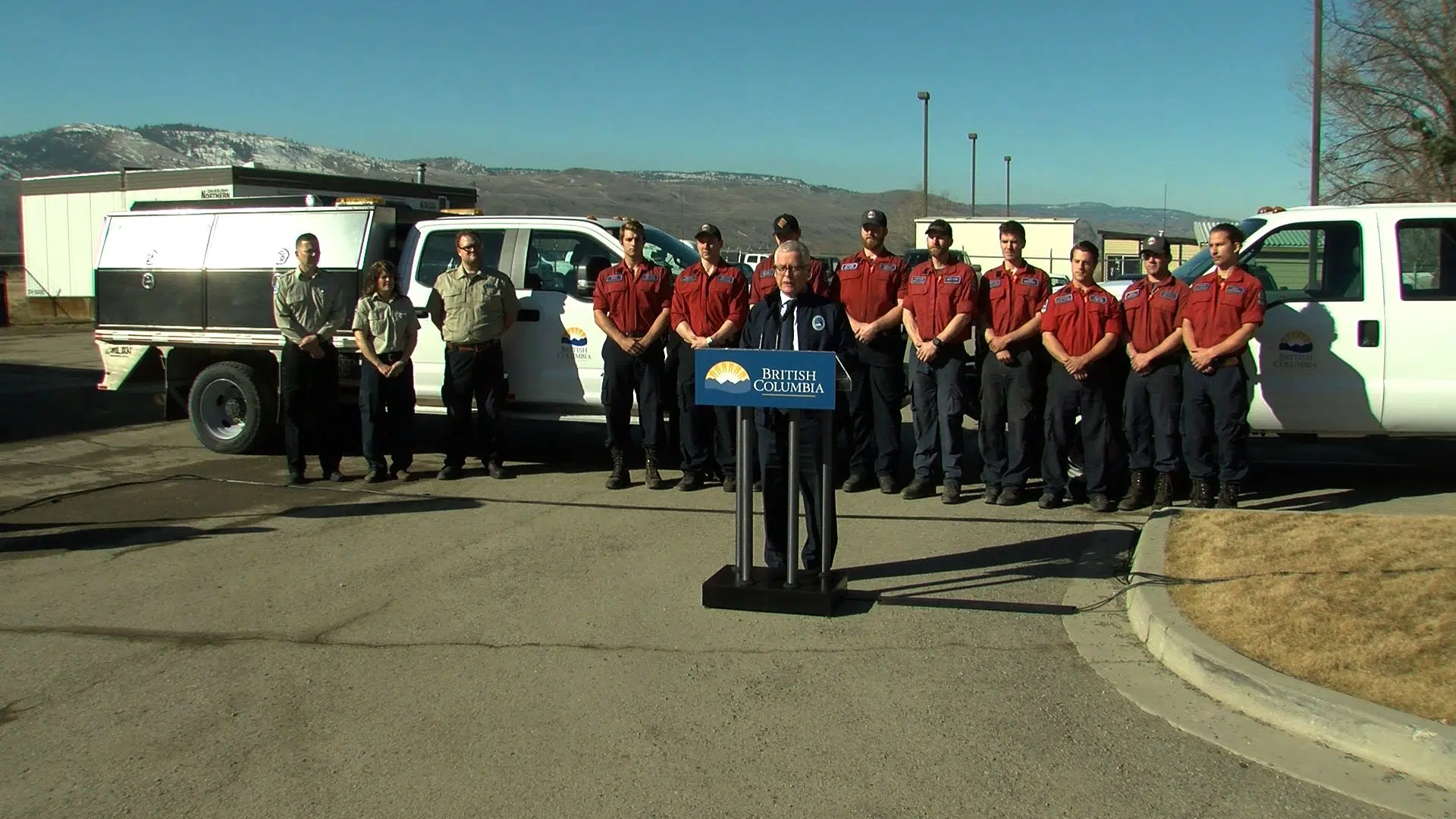
Province announces wildfire preparedness plan in Kamloops
KAMLOOPS — Wednesday marks the first day of spring, and while many of us have yet to put away our winter clothing for the year, the BC Government is already looking to the summer, and the upcoming wildfire season in the province.
On Tuesday, Doug Donaldson, Minister of Forests, Lands, Natural Resource Operations and Rural Development was at the provincial wildfire coordination centre, outlining the steps the province is taking to try and mitigate the risk to residents of British Columbia.
The current wildfire danger rating in the Kamloops Fire Centre is low, but Donaldson was in town outlining his government’s preparedness plan for the 2019 wildfire season.


